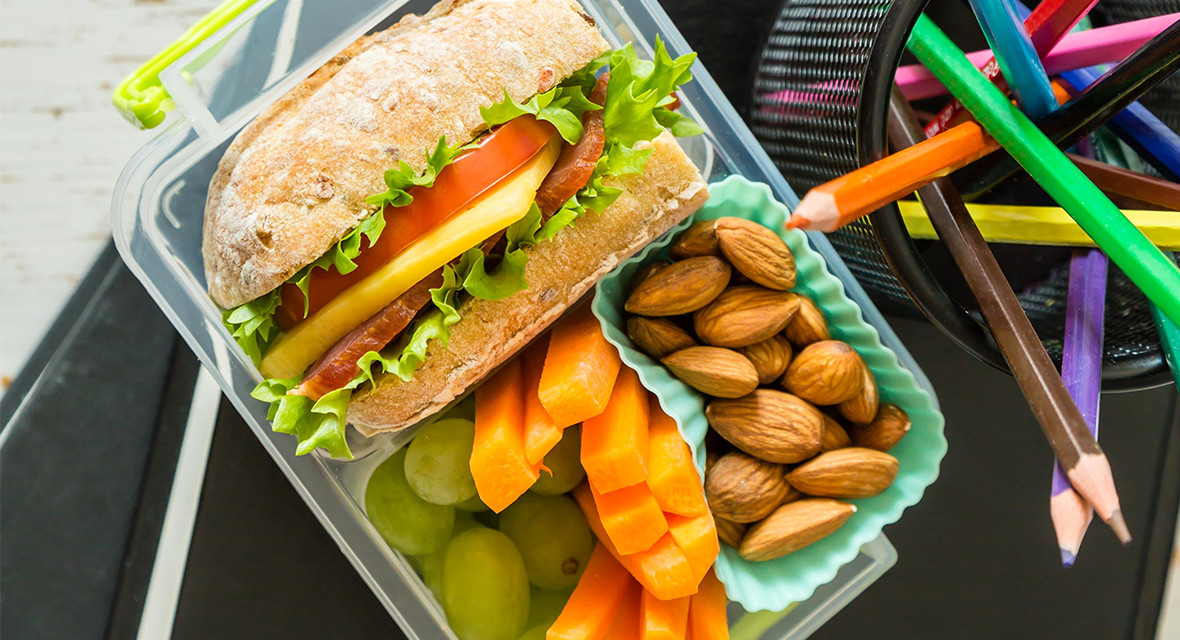
Think Outside the Lunchbox
This article was written in collaboration with Karine Mousseau, a dietitian and nutritionist.
Packing a lunchbox with healthy food that your kids will find tasty—while also meeting school regulations—can be as complex as assembling furniture without the instructions.
If your children are picky eaters and sometimes return home with lunchbox leftovers, it’s easy to get discouraged. But fear not! Shareable moments like getting the kids into the kitchen with you, or thinking up colourful, playful meals can make a big difference in your daily routines and their appetites. Plus, by using lunches as opportunities to introduce them to new foods one at a time, you can add teachable moments too!
Invite the Kids to Pitch in
It’s well-known that children joyfully eat meals that they’ve made themselves. Inviting your kids into the kitchen to help put their lunches together makes for great bonding time and sets them at ease with different tastes and textures.
Kids love making simple recipes, like energy balls, a dish that works just as well as a snack. With ingredients that can be changed up easily to suit your kids’ tastes or their school’s dietary requirements (food that’s lactose-free or contains no nuts or eggs), this is a perfectly flexible dish. Choose from dates, cocoa, nuts, oatmeal or dried fruit to make their ideal recipe.
When it comes to savoury dishes, a succulent veggie pâté is not as tough to cook up as you might think. A healthy, delicious replacement for the classic pâté, put it in a sandwich and pair it with a side dish like a tomato salad to make a full meal. There are a ton of recipes out there. A quick online search will net you a simple and easy pâté to make together as a family.
Another great shareable moment is to bring the kids to the store and have them pick out their own lunchboxes and water bottles. They’ll feel even more involved in each step that goes toward crafting their lunch. In fact, as children’s accessories are increasingly design-oriented and practical, packing and unpacking lunch is more appealing than ever for the kids. Just make sure that the items they take to school are BPA-free and microwave and dishwasher-safe. And don’t forget the cutlery!
Have Fun with Presentation
Food is consumed first with the eyes—and children are particularly sensitive to the appearance of what they’re about to eat. Instead of a single, large dish, consider dividing up their lunches into several smaller dishes by using separate containers or a compartmentalized lunchbox. This is an original way to showcase a variety of options and focus on colours as well as textures.
Place finger foods in smaller dishes—think hard-boiled eggs, baby carrots, cucumber slices, hummus, mini-sandwiches, nuts or chopped fruit. To make sure your little one has enough energy to last the afternoon, pack at least two portions of vegetables, one portion of protein and one portion of grains.
Bonus tip: kids love food that’s fun and artfully presented, like a stickman made of cherry tomatoes, or a sandwich sliced in the shape of a house. Let loose the artist within and keep your creation a secret from them until they get to the cafeteria—you can bet they’ll be excited to tell you about their surprise when they get home!
Introduce One New Food per Week
Quinoa, sauerkraut, buckwheat groat sprouts, tamari sauce—today’s kids have a lot more tastes to choose from. You may often feel like sharing your latest culinary discoveries with them, but push too many and the kids may quickly be overwhelmed. Leave plenty of time between the more unorthodox items, and don’t always force your children to eat what you as an adult have grown to love. You risk turning them off healthy items like beets and asparagus, creating dislikes that could last for years.
The key is to respect the rate at which your children can deal with change. Come up with different ways of presenting new items. For example, if you want to get them to eat cauliflower, prepare it in two ways: once as a gratin and raw with a dip the second time. Nutritionists say it’s better not to lie about or hide the food, so let your children know exactly what they’re eating. And if they’re not won over, you’ll just have to try again with a different recipe. It takes children five to ten tastes of an item to accept it—and sometimes even more.
Packing colourful lunches and talking to your kids about what they ate and what they tossed away will help you craft simple, balanced meals they’ll love. Remember that cooking and eating must always remain positive experiences. Encourage your kids to help out in the kitchen, even the littler ones, so that they can smell, taste and touch—this makes all the difference to what they’ll eat and love. And don’t forget that a child who eats well will grow up fit and healthy in mind and body!
Karine Mousseau
After studying naturopathy, Karine completed a Bachelor's degree in nutrition at the University of Ottawa. Check out more of her work at karinemousseau.com, or by booking a private consultation in Bromont or Longueuil.













